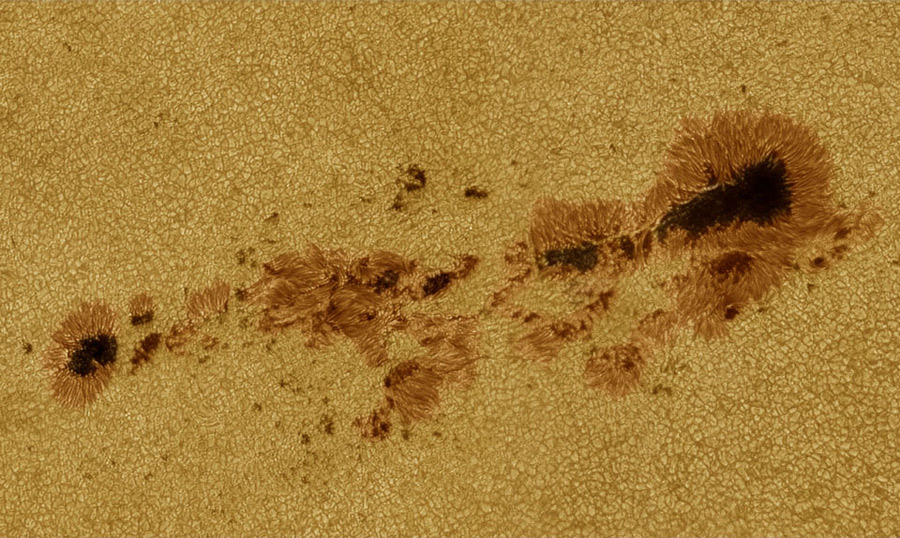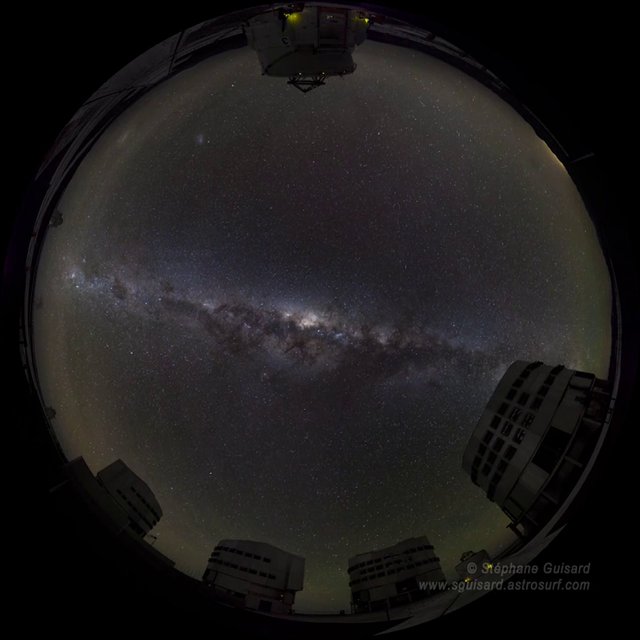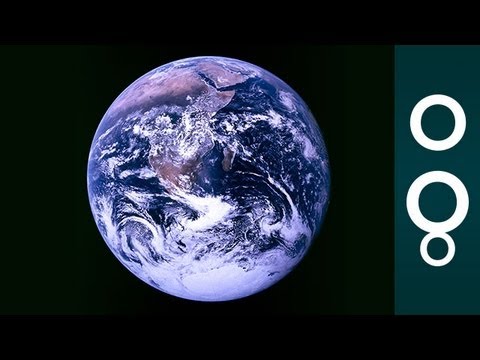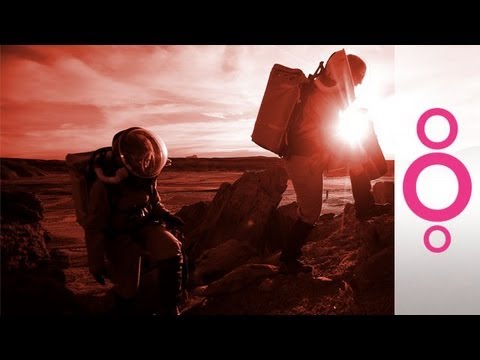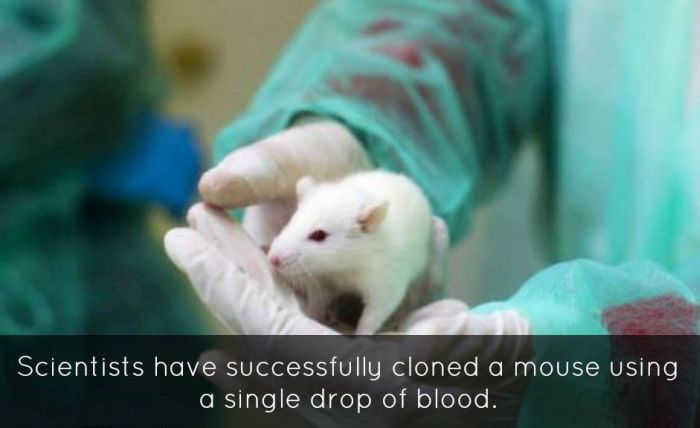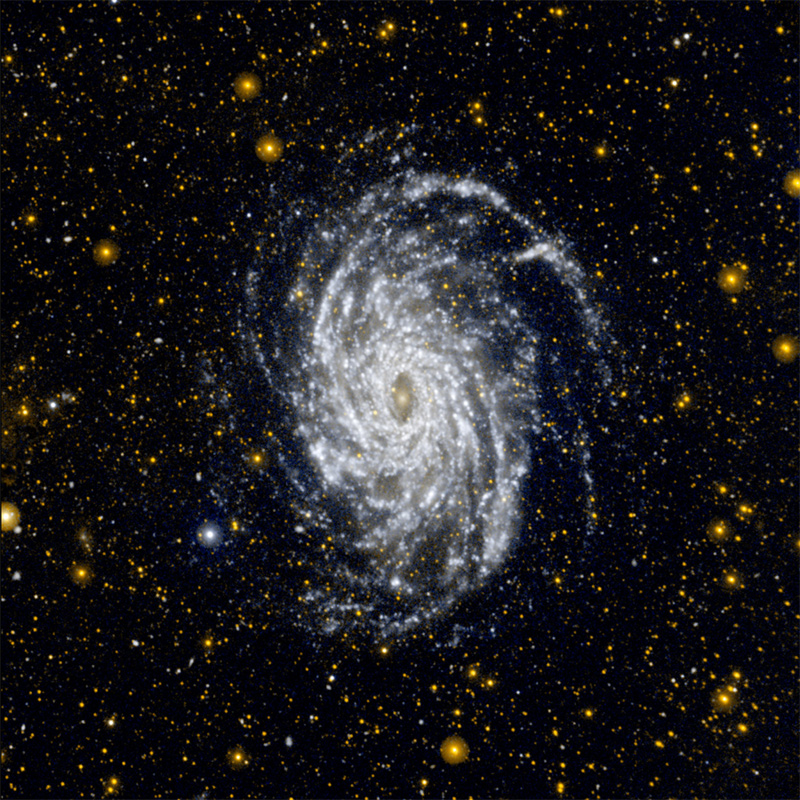Large sunspots now crossing the Sun
leases a cloud of energetic particles into the Solar System. Were a very powerful cloud to impact the Earth’s magnetosphere, it could be dangerous to Earth-orbiting astronauts and satellites. Conversely, the impact of even a less energetic cloud might create picturesque aurora. Pictured above is the sunspot region as it appeared two days ago.

